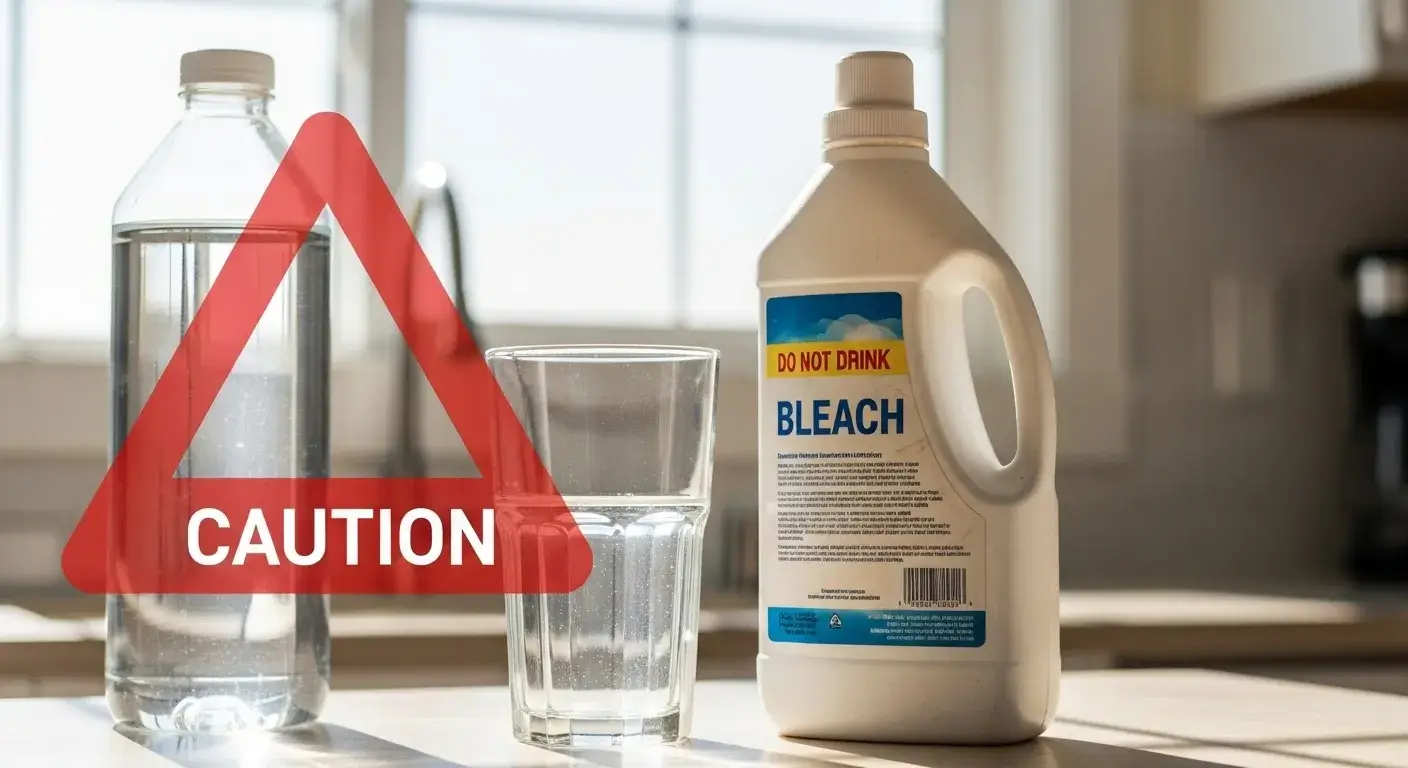
Washing and reusing bleach bottles might seem thrifty—but one mistake could cost your health. Discover the real risks behind this common question.
Bleach bottles are not safe for drinking, even after thorough washing, due to chemical absorption by plastic and contamination risks.
Drinking water should be stored in food-safe containers—not in bottles designed to hold corrosive chemicals. Let's unpack why.
Can a bleach bottle be safely cleaned for drinking purposes?
Cleaning doesn't guarantee safety—bleach bottles absorb chemicals into the plastic that soap and rinsing can't fully remove.
Bleach bottles, usually made from HDPE plastic1, are not food-safe and can leach toxic residues even after washing.
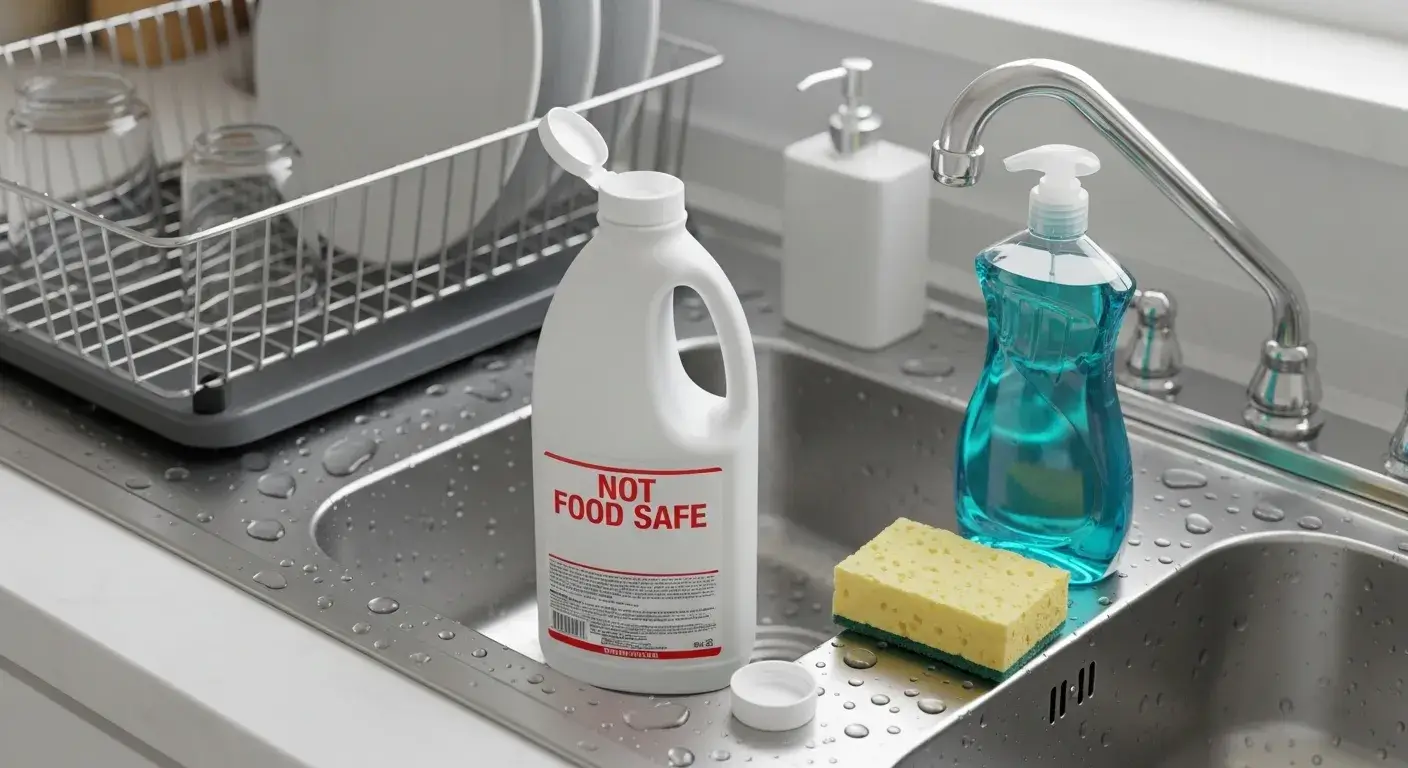
Risks hidden in the plastic
Bleach bottles are made from HDPE plastic designed for chemical storage. Over time, this plastic absorbs chlorine and other compounds. Even with soap, water, and multiple rinses, bleach residues can remain embedded. This leaching can contaminate drinking water and cause health risks.
What risks are associated with reusing bleach bottles for drinking?
Health experts warn against drinking from cleaned bleach bottles due to high contamination potential and leaching hazards.
Drinking from reused bleach bottles can lead to chlorine ingestion2, which may cause nausea, throat irritation, and chemical burns.
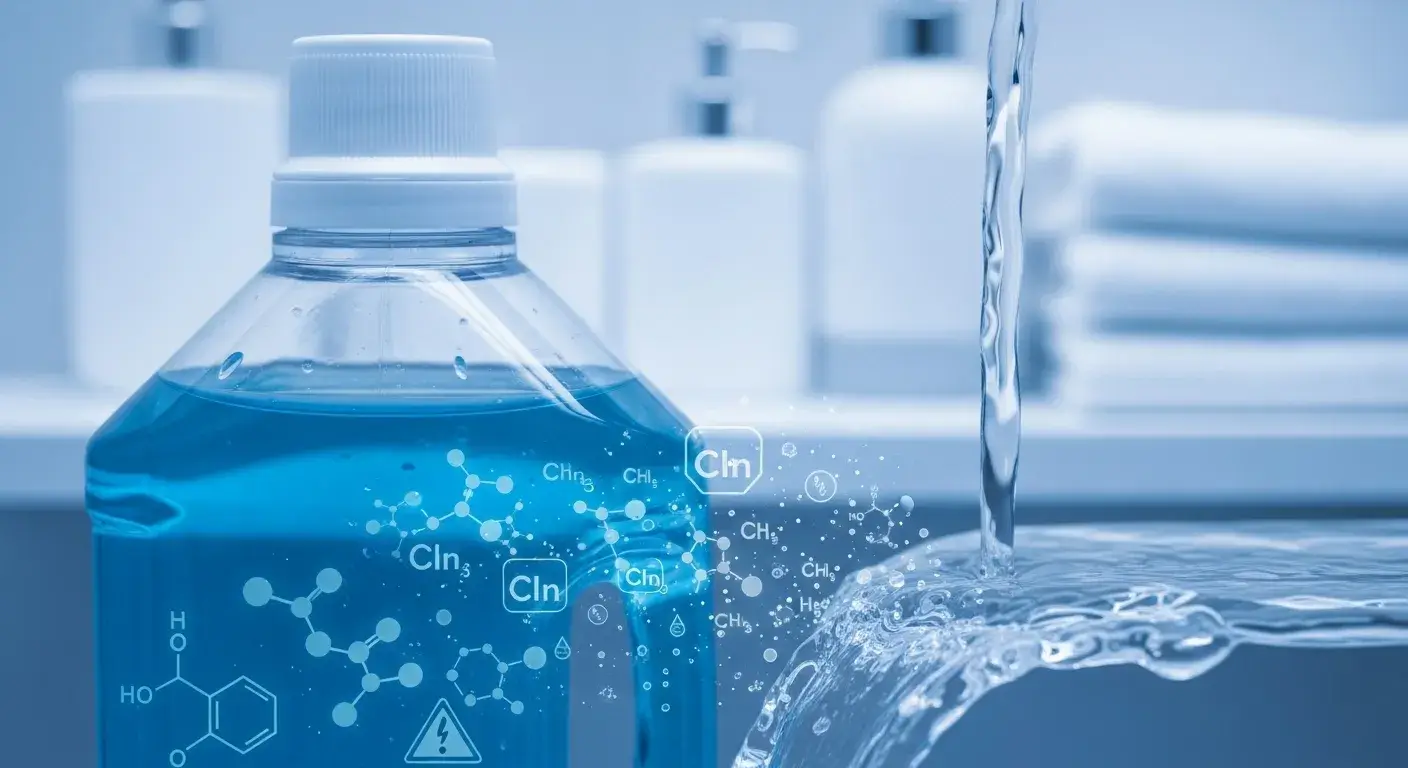
Real consequences from unseen toxins
The CDC and EPA clearly state that bleach is harmful when ingested. Reddit discussions and Clorox guidelines agree—residual bleach can remain in the plastic and leach into stored water. This risk is not just about taste—it's about your long-term health.
How thorough must cleaning be to remove bleach residues?
Even multiple rinses and soap scrubbing cannot fully neutralize chemical residues in the bottle's walls.
Plastic absorbs chlorine and additives, which standard cleaning methods3 cannot eliminate completely.
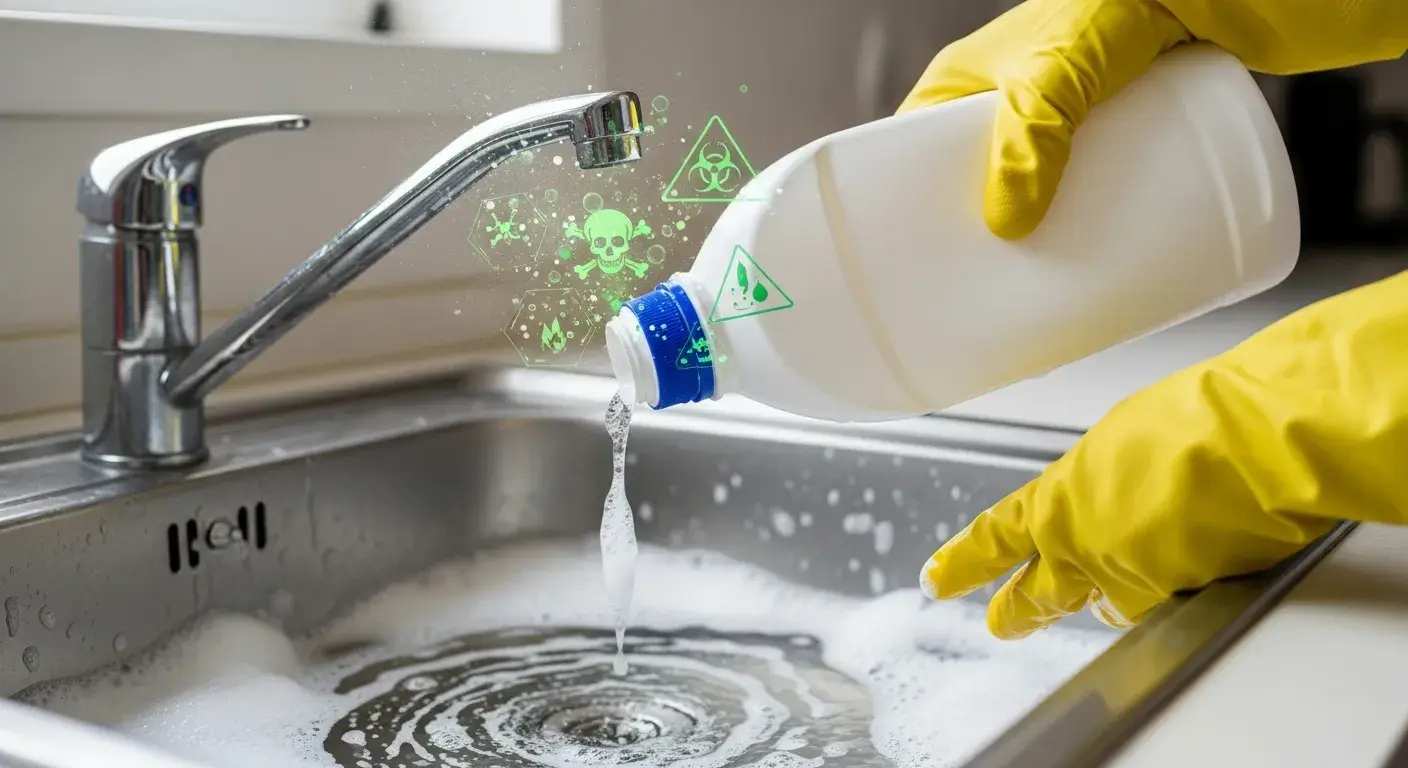
Why bleach doesn't fully rinse out
Rinsing with water, even hot water, can't extract absorbed chemicals. Food-safe plastics undergo strict manufacturing processes that bleach bottles do not. The difference lies in microscopic absorption—what you can't see could still harm you.
Are certain plastics used in bleach bottles more prone to chemical absorption?
Yes. Bleach bottles are made from HDPE plastic, which retains chemical residues over time.
HDPE (high-density polyethylene)4 used in bleach bottles is porous enough to absorb and retain chlorine.
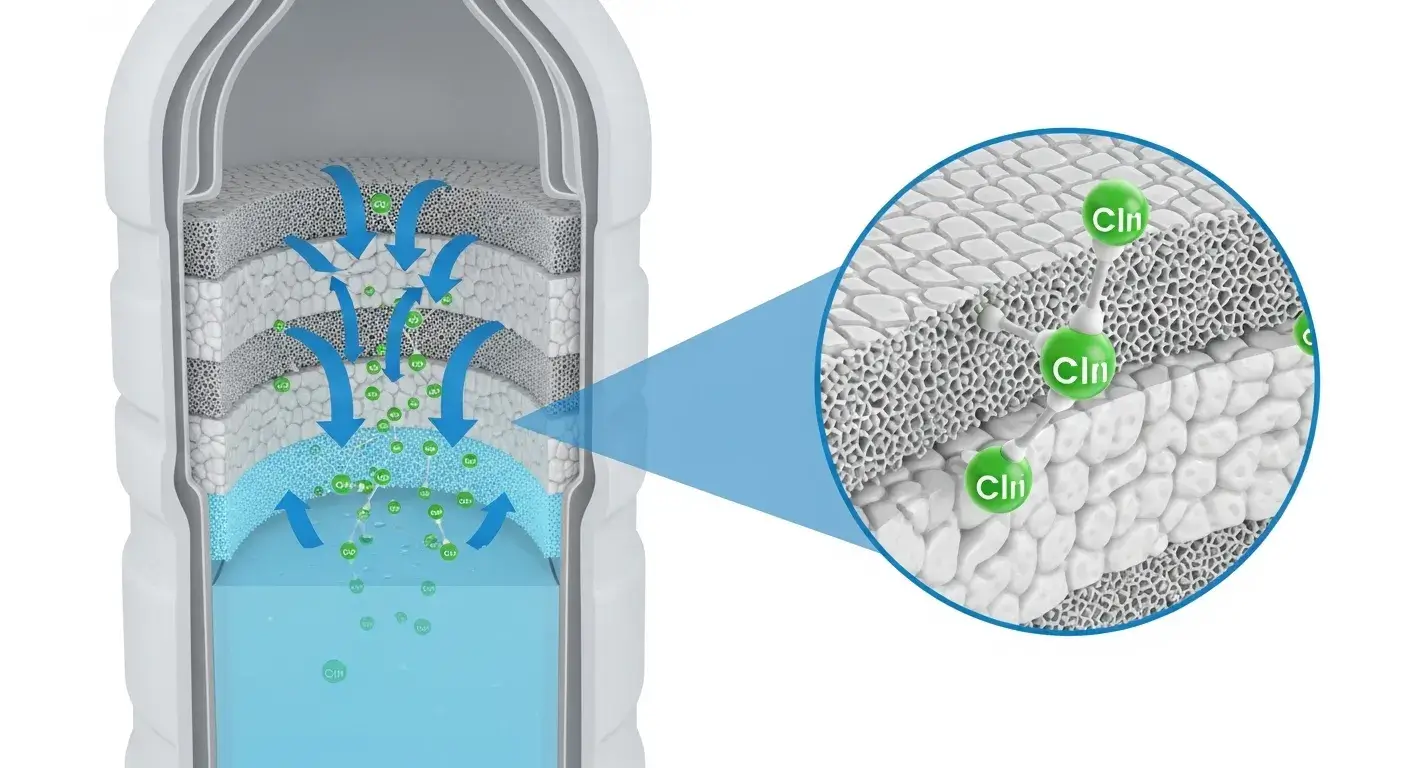
Plastic type makes all the difference
HDPE is a tough plastic but not inert. While suitable for chemicals like bleach, it's not food-grade. When exposed to water or heat, any retained chemicals may migrate into drinking water.
What are safer alternatives to reusing bleach bottles for drinking?
Use food-grade plastic, stainless steel, or glass containers designed for safe drinking water storage.
Certified water bottles made from BPA-free, food-safe materials5 undergo strict health compliance testing.
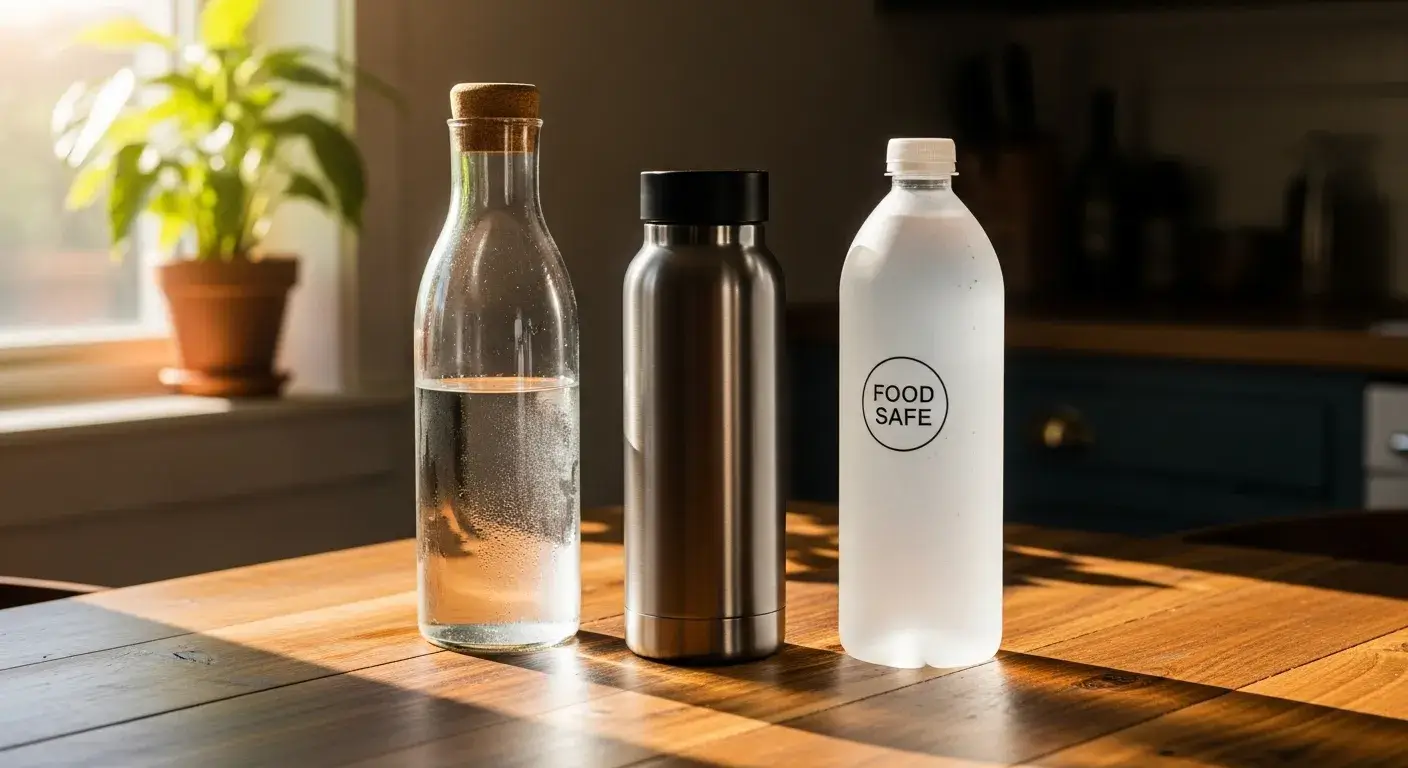
Protecting your health starts with smart materials
Look for containers labeled "food grade" or "BPA-free." Stainless steel and glass offer long-term safety and don't absorb chemicals. These are better choices not just for safety—but also for taste and reusability.
How do manufacturers design bleach bottles in terms of chemical retention?
Bleach bottles are engineered to hold strong oxidizing agents—not safe drinking liquids.
They are designed with chemical resistance6 in mind, not safety for ingestion or long-term food contact.
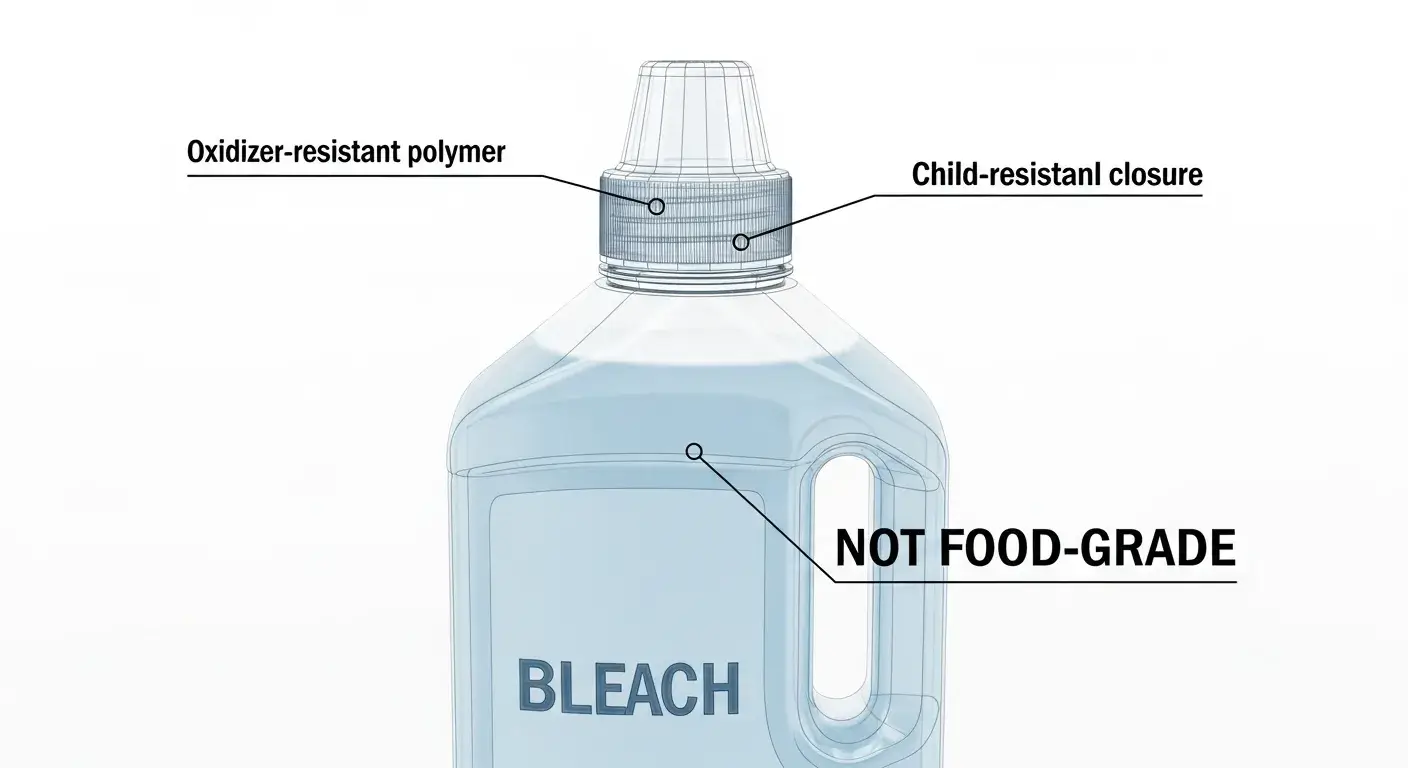
The purpose dictates the plastic
Additives used in bleach containers often improve shelf life and strength—but some are not tested for food contact. That's why bleach bottles should stay in their chemical-use lane.
What cleaning methods can reduce contamination risks in repurposed bottles?
While some methods reduce surface bleach, they can't undo chemical absorption in plastic.
Soap, hot water, and diluted bleach solutions clean surfaces but won't neutralize embedded toxins7.
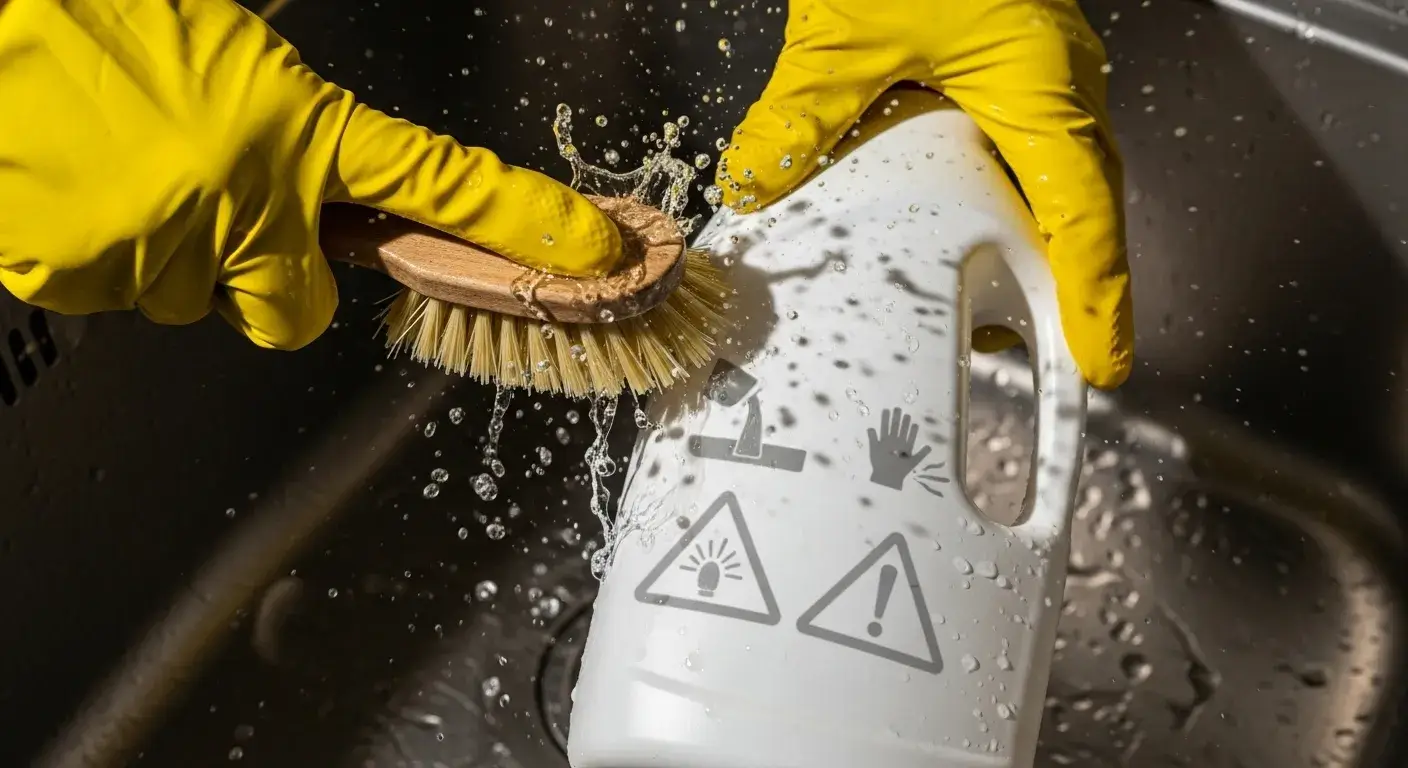
Cleaning isn't always a cure
Some guides recommend using bleach to clean other bottles—but this differs from using bleach bottles themselves. That subtle but crucial difference keeps you safe.
Is it better to use a different container for drinking water?
Yes—health authorities universally advise using containers made for food or drink.
Using a purpose-built water container approved for food use8 prevents exposure to harmful chemicals and ensures long-term safety.
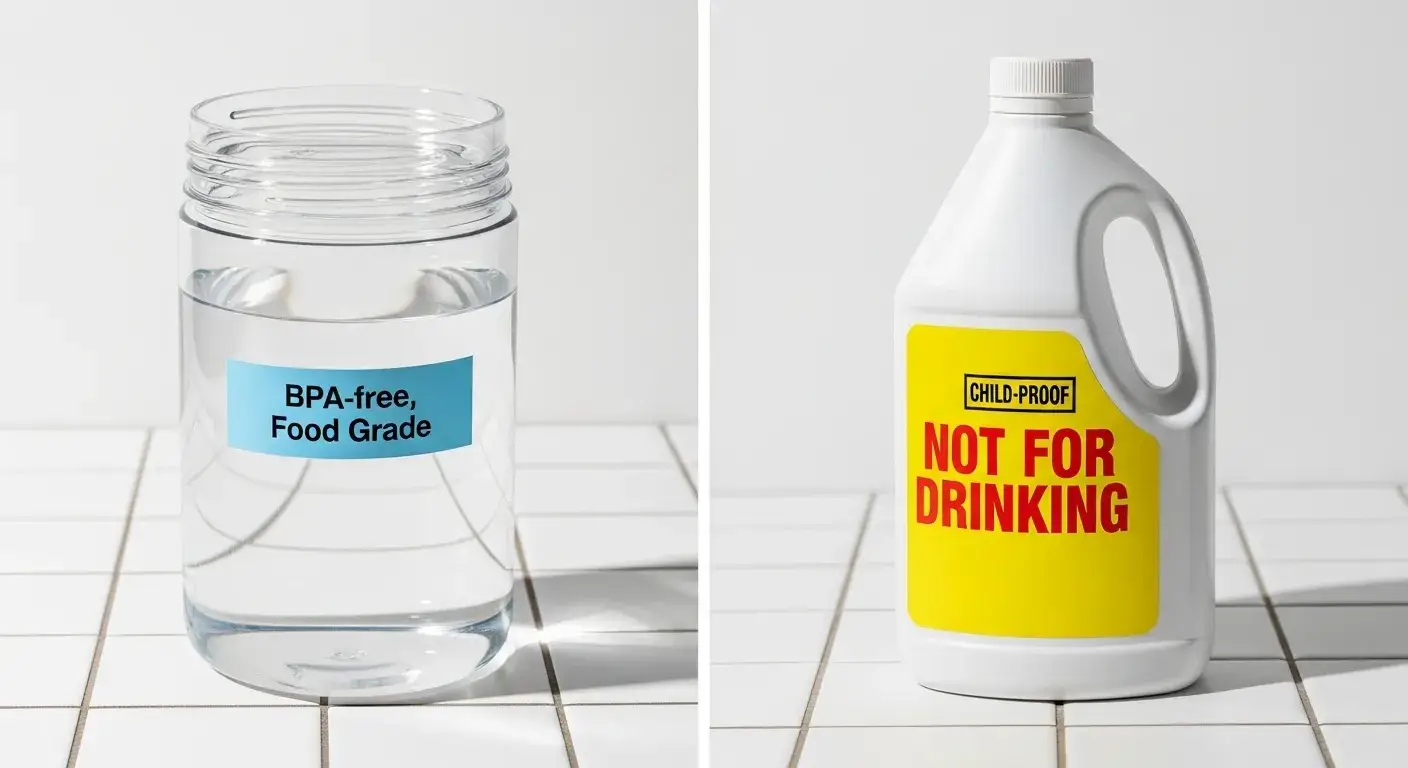
Make the safe switch now
Water bottles are designed to meet food contact standards. Bleach bottles are not. Choose one designed with your health in mind.
What do experts and users say about repurposing bleach bottles?
There's strong consensus: don't do it. Health risks outweigh any potential convenience.
Experts recommend against using bleach bottles for drinking—even in emergency situations.
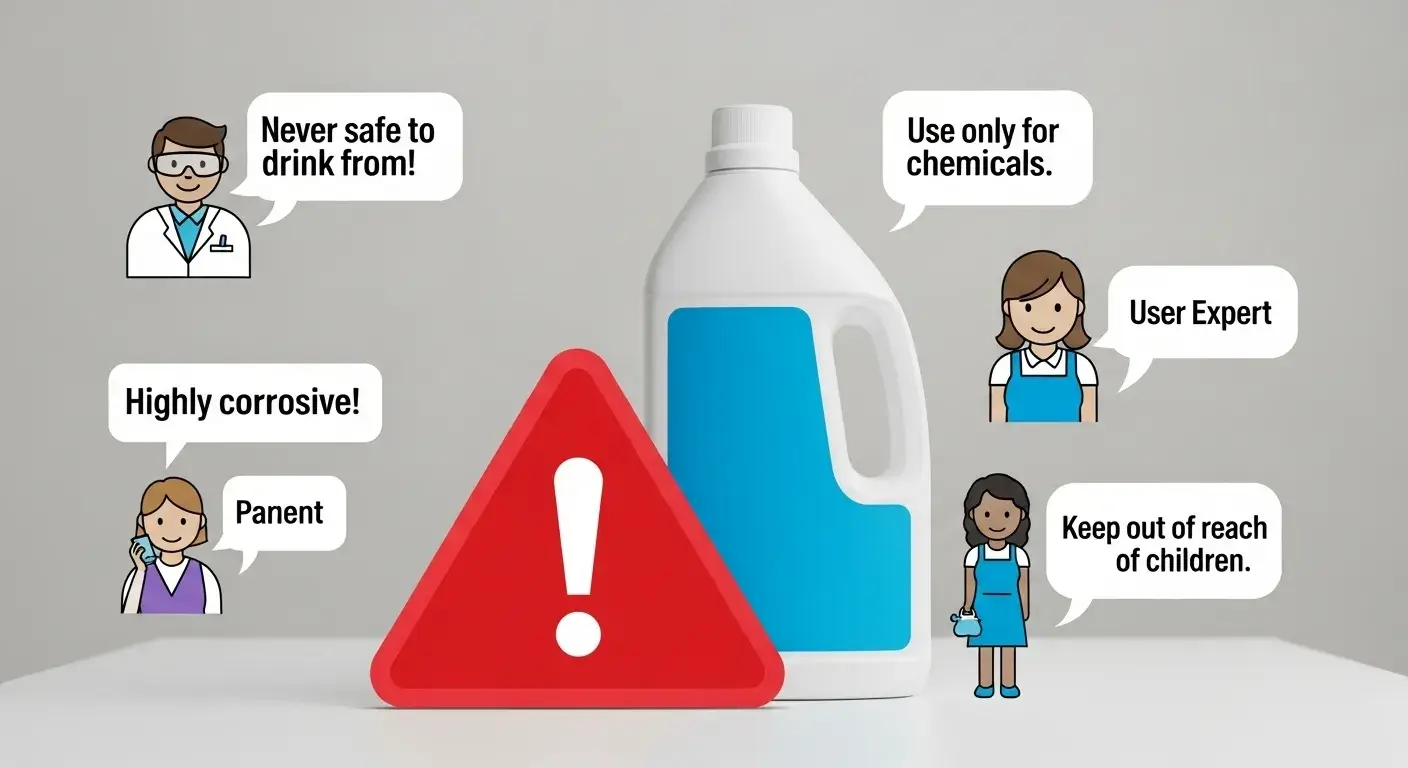
Trust the professionals (and real users)
Reddit communities, Clorox help guides, and emergency preparedness experts all warn: even if it seems clean, bleach bottle plastic isn't reliable for drinking.
What precautions should you take if you must reuse a bleach bottle?
If absolutely necessary, use it only as an outer container and never allow direct water contact.
Insert a clean inner container inside the bleach bottle, and clearly label the outside "Not for Drinking."
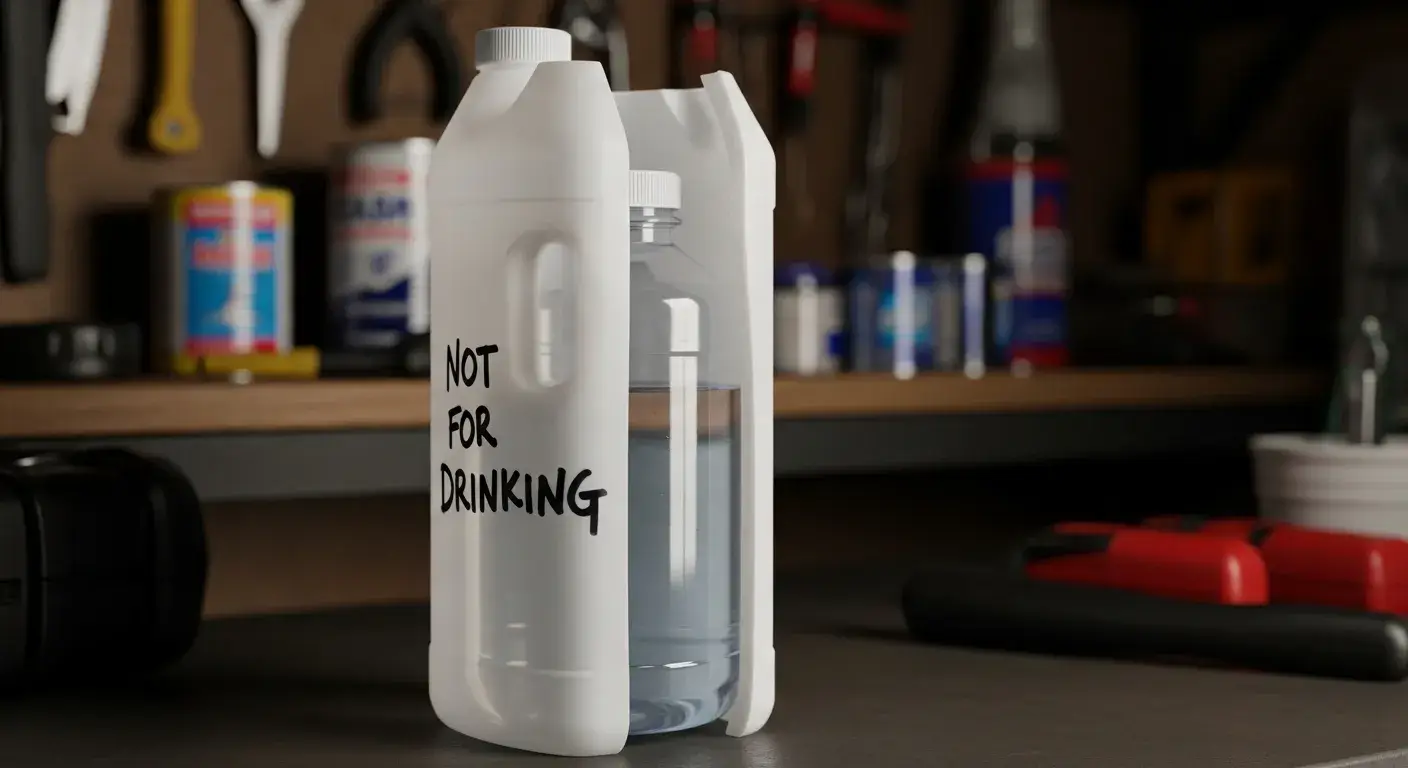
Last-resort safety advice
If options are limited, avoid direct contact. Don't drink from the bottle. Use it for storage or shielding only.
Conclusion
Bleach bottles cannot be made safe for drinking. Always use certified food-grade containers instead.
Footnotes:
-
Learn about HDPE plastic properties and why it's designed for chemical storage rather than food contact, including its chemical absorption characteristics ↩
-
Understand the medical risks and symptoms of chlorine poisoning, including nausea, throat irritation, and chemical burns from ingesting chlorine residues ↩
-
Scientific research showing that HDPE has high chemical sorption capacity and why standard cleaning methods cannot remove embedded chemicals from plastic ↩
-
FDA-approved information about food-grade plastics and the differences between materials approved for food contact versus chemical storage ↩
-
Comprehensive guide to safe water bottle materials including glass, stainless steel, and certified BPA-free plastic options that undergo strict health testing ↩
-
Technical explanation of how HDPE is engineered for chemical resistance and durability rather than food safety or ingestion protection ↩
-
Medical information about chlorine poisoning and why cleaning methods cannot eliminate the health risks from chemical contamination ↩
-
Expert recommendations for the safest water bottle materials that are non-toxic, lead-free, and specifically designed for drinking water storage ↩

